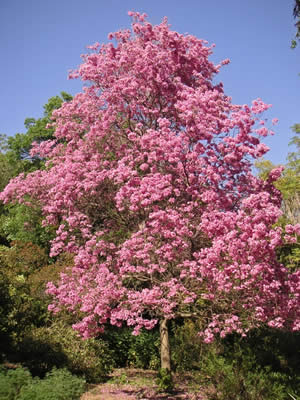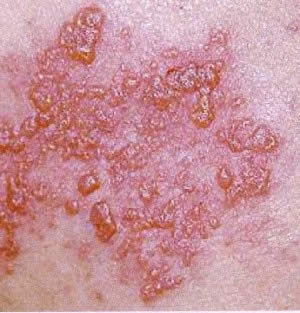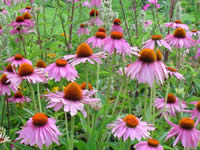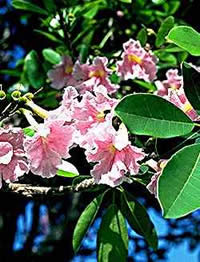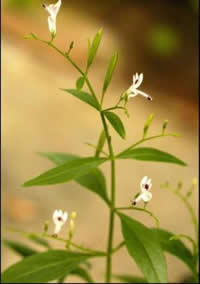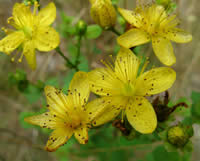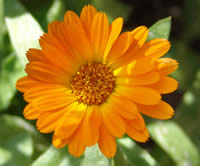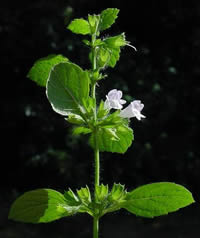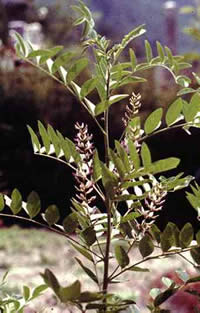Shine
JF-Expert Member
- Feb 5, 2011
- 11,481
- 1,364
BAADHI YA MASWALI YALIYOULIZWA NA WADAU KUHUSU TATIZO HILI
Nawakilisha
---
swali la nyongeza: mkanda wa jeshi unaitwaje kwa lugha ya kiingereza/medical language?nataka ni google ili nijielimishe zaidi juu ya hili gonjwa au sijui ni dalili ya ugonjwa?
UFAFNUZI WA KINA WA UGONJWA WA MKANDA WA JESHI
Kwa takribani miongo mitatu sasa, tumeshuhudia ongezeko kubwa la mlipuko wa ugonjwa wa mkanda wa jeshi linaloendana na ongezeko la hususani ugonjwa wa UKIMWI. Hali hii imefanya baadhi ya watu kuamini kuwa, ugonjwa huu ni dalili ya wazi kabisa ya mtu kuwa na VVU, imani ambayo kwa kiasi kikubwa ina ukweli ndani yake ingawa si kwa wote wanaopatwa nao.Mkanda wa jeshi au shingles au herpes zoster kwa majina yakitabibu ni ugonjwa unaosababishwa na virus wa aina ya Varicella-zoster ambao pia husababisha ugonjwa wa tetekuwanga au chickenpox. Ugonjwa huu huathiri ngozi ambapo huambatana na vipele na michubuko kama ya kuungua yenye kuambatana na maumivu makali.
Visababishi
Kama tulivyokwisha tangulia kueleza hapo juu, ugonjwa huu husababishwa na virus aina ya Varicella-zoster ambao pia husababisha ugonjwa wa
tetekuwanga. Baada ya mtu kupatwa na tetekuwanga, virus hawa hubaki katika hali ya kupooza/kutokuwa na madhara (dormant) katika neva fulani za mwili. Baada ya miaka kadhaa, iwapo itatokea kinga ya mwili ikashuka kwa sababu yoyote ile, virus hawa hupata tena nguvu/kuwa na madhara (active), kuibuka na kusababisha ugonjwa wa mkanda wa jeshi.Kwa kawaida shambulio la mkanda wa jeshi hutokea mara moja maishani ingawa laweza kujirudia.
Vihatarishi
Mkanda wa jeshi unaweza kumpata mtu wa umri wowote ule ingawa watu walio katika makundi haya wapo katika hatari kubwa zaidi:
Wenye umri wa zaidi ya miaka 60.
Mtu aliyewahi kuugua ugonjwa wa tetekuwanga kabla ya umri wa mwaka mmoja. Watu ambao kinga yao ya mwili imepungua kwa sababu mbalimbali kama vile matumizi ya aina fulan za dawa, magonjwa kama vile maambukizi ya VVU (HIV/AIDS), saratani na utapiamlo.
Je, mkanda wa jeshi huambukizwa?
Hapana ugonjwa huu hauambukizwi kutoka kwa mtu mmoja kwenda kwa mwingine! Lakini iwapo itatokea mtoto au mtu mzima ambaye hajawahi kupatwa na ugonjwa wa tetekuwanga maishani mwake na ambaye pia hajawahi kupata chanjo dhidi ya ugonjwa huo akakutana na mtu mwenye ugonjwa wa mkanda wa jeshi, mtoto au mtu huyo atapatwa na ugonjwa tetekuwanga na siyo mkanda wa jeshi.

Dalili
- Dalili ya awali kabisa ya mkanda wa jeshi ni maumivu makali sehemu fulani/ upande mmoja wa mwili yakiambatana na hali ya ganzi na hisia za kuungua kwenye ngozi. Maumivu pamoja na hisia za kuungua huwa makali sana na hutokea kabla ya vipele/michubuko kutokea kwenye ngozi.
- Kawaida, vipele au michubuko huusisha eneo fulani la mwili kuanzia kwenye uti wa mgongo kuzunguka kuelekea eneo la tumbo au kifua.
- Michubuko pia inaweza kutokea kwenye maeneo yanayozunguka uso, macho, mdomo au masikio.Dalili nyingine ni pamoja na:
- Maumivu ya tumbo
- Homa
- Maumivu ya mwili mzima
- Vidonda sehemu za siri
- Maumivu ya kichwa
- Maumivu ya viungo
- Kuvimba kwa mitoki/ matezi
Iwapo neva za maeneo ya uso zitaathiriwa, mgonjwa anaweza kupatwa na matatizo ya kuona, kuonja, au kusikia.
Vipimo
Ni nadra sana kufanya Vipimo maalum kwa ajili ya utambuzi wa ugonjwa huu, isipokuwa kwa nchi zilizoendelea. Kwa ujumla utambuzi wa ugonjwa huu hufanyika kwa kuchukua historia ya mgonjwa na kuchunguza sehemu ya ngozi iliyoathiriwa.
Vipimo vya damu yaani FBP huonesha ongezeko la chembe nyeupe za damu na antibodies dhidi ya virus wa tetekuwanga.
Matibabu
Matibabu ya mkanda wa jeshi hujumuisha matumizi ya dawa kama vile Acyclovir, Famciclovir na Valacyclovir kwa ajili ya kuua virus wanaosababisha ugonwja huu. Dawa hizi husaidia kupunguza maumivu, kuzuia madhara zaidi ya ugonjwa huu na kupunguza muda wa ugonjwa.
Dawa hizi hutolewa angalau saa 72 baada ya mgonjwa kuanza kuhisi maumivu na hali ya kuungua. Ni vema dawa zianze kutumika kabla ya vipele/michubuko kujitokeza.
Jamii ya dawa za corticosteroids kama vile prednisolone husaidia kupunguza maumivu na uvimbe kwa badhi ya wagonjwa. Dawa nyingine zinazofaa kutumika ni pamoja na jamii ya antihistamines kwa ajili ya kupunguza muwasho, dawa za maumivu, calamine lotion kwa ajili ya kupunguza muwasho. Aidha mgonjwa anashauriwa kupata mapumziko ya kutosha
Matarajio
Mkanda wa jeshi kwa kawaida huchukua kati ya wiki mbili hadi tatu kupona wenyewe. Aidha ni nadra sana kwa ugonjwa huu kujirudia tena. Iwapo neva zinazothibiti mwendo katika mwili zitakuwa zimeathirika, mgonjwa anaweza kupatwa na kupooza kwa muda au kwa kudumu kwa sehemu ya mwili iliyoathiriwa. Wakati mwingine, maumivu yanayosababishwa na mkanda wa jeshi yanaweza kudumu kwa miezi mpaka mwaka hata baada ya mgonjwa kupona kabisa. Maumivu haya yanayojulikana kama postherpetic neuralgia kwa kawaida huwakumba wagonjwa wenye umri wa zaidi ya miaka 60 na husababishwa na uharibifu katika neva za mwili.
Madhara
Madhara ya mkanda wa jeshi ni pamoja na kupatwa na shambulio jingine la ugonjwa huu, maambukizi ya bakteria, upofu iwapo eneo la jicho litahusika, ukiziwi, maambukizi katika utando wa ubongo (encephalitis), uwepo wa vimelea kwenye damu (sepsis) au ugonjwa unaoitwa Ramsay Hunt Syndrome iwapo utahusisha neva za uso.
Kinga
Epuka kabisa kugusa eneo lenye vipele au michubuko kwa mtu mwenye mkanda wa jeshi au tetekuwanga iwapo hujawahi kuugua au kupata chanjo ya tetekuwanga.
Ni vema kupata chanjo dhidi ya virus wa Varicella zoster kama inapatikana katika nchi au eneo ulilopo . Tafiti zimeonesha kuwa, watu wazima wanaopata chanjo hii wana uwezekano mdogo sana wa kupata madhara ya mkanda wa jeshi kuliko wale wasiochanjwa.
BAADHI YA MICHANGO ILIYOTOLWEWA NA WADAU
---Ugonjwa wa mkanda wa jeshi (herpes zoster aka shingles) unasababishwa na virus anayeitwa Varecella zoster, huyu huwa anaingia mwilini mapema sana katika umri mdogo, anasababisha ugonjwa wa "chiken pox". Ugonjwa ambao huambatana na homa na vipele, ambayo huisha vyenyewe. Kuisha kwa chicken pox hakumaanishi kuwa Virus wameisha, bali huwa wanaenda kwenye sehemu za mwisho za mishipa ya fahamu (nerve endings) na huwa wanakaa humo na kuwa dormant, kwa maneno mwngine, kwa kuwa kinga ya mwili ingali juu, basi hawa wadudu hawana madhara, na ndo maana wanakimbilia kule kusikofikiwa kiurahisi na seli za kinga. Ikiwa kinga ya mwili inapungua kwa sababu yeyote ile ama kutokana na HIV/AIDS, advanced cancer, lishe duni, na nyingine,..basi hawa wadudu wanapata nguvu na kujitokeza from nerve endings walipokuwa. Wanasababisha painful blisters, na wanatambaa na mishipa ya fahamu,..ndio maana hizo blisters ama vidonda vinakuwa kama vinafata mstari, ama eneo husika. Mara nyingi mgongoni, kiunoni, kifuani, ama mabegani,..kwa kiswahili "mkanda wa jeshi" kwa kuwa ipo sehemu ambazo wanajeshi hufungia mkanda.
Matibabu: mkanda wa jeshi hauna dawa,..bali huisha wenyewe ikiwa kinga inarejea, kwa hiyo dawa wanazopewa huwa ni kwa ajili ya maumivu tu,..wakati mwingine kuzuia infections za bacteria ambazo husababisha usaha, ama kupunguza tu idadi ya virusi kuzuia visizaliane zaidi.
Madhara,..zaidi ya mabaka yanayodumu, sifahamu madhara mengine ukiacha maumivu makali. mara chache hushambulia macho na huweza kukufanya kuwa kipofu, ama kushambulia nerves zinazosaidia misuli, na kufanya ushindwe kutuimia kiungo husika
Kupata mkanda wa jeshi hakuna maana kuwa Una UKIMWI,..ila wengi wanaopata haswa kwa mazingira yetu basi ni kweli wanakuwa na ukimwi, maana hiyo ndio sababu kuu ya kupunguza kinga ya mwili Tanzania
Stun
---DAWA YA KUTIBU MKANDA WA JESHI NI MSHUBIRI
Aloe Vera - The best natural home remedy for people with shingles or Herpes Zoster skin disease
Shingles or Herpes Zoster
I don't know if you have encountered this before but this is the same virus that causes chicken pox when we were young and when it
comes back then you may call it shingles. They usually occur to older people or people who under went surgery and had low immune
system. It occurs to my brother when he had Gastritis and his resistance was so weak.
I'll tell you that having this one its no joke and it really gives you a stabbing, tinkling, and itching feeling. Its viral quality moves on the
infected nerve and if not treated this will get worser day after day. Doctors may prescribed you antiviral capsules like valtrex which is
costly depending on the dosage like 6 capsules everyday that he discontinued taking it after he found out that Aloe Vera leaves can cure it.

MSHUBIRI ALOE VERA.
Here's my story of my brother's encounter of shingles healed by Aloe Vera leaves in just a few days. He first notice it as a rash on his
waist. He didn't mind it and he was thinking it would eventually heal by itself. Day after day its getting bigger and worst and its filled with
liquid inside of it. Now he got worried and so he take action by searching it on google and for hours of searching he found it and it
matches to the description and images. This is definitely it and to confirm it, He went to the dermatologist then she confirm as herpes
zoster or shingles. She prescribed him antiviral medicine which he should take 6 capsules a day. Since he still do not know other
alternatives so he bought 6 capsules for a day. When he got home he immediately search the internet of other remedies of this then he
found Lemon Balm but unfortunately it is not available in his country and that you have to order it online and It would take more days to arrive.
Since Lemon Balm is impossible to achieve but he did not lose any hope so he dig again for alternatives then he came across to a
website made by a fellow Filipino. He stumbled on the site calledPhilippineHerbalMedicine.Org he found different native herbal plants like
ginger,gummamela, garlic and many more amazing herbs. He continue reading on that site and then found Aloe Vera and its
amazing medicinal qualities and the important thing he found is its Antiviral, Antifungal, Antiparasitic and Antibiotic qualities. Next
thing he did is he search the internet about Aloe Vera and read some healing miracle on Shingles. Many testimonials confirm that
Aloe Veradoes heal Shingles and he was convinced to take Aloe Vera to treat his Shingles.
He phone his friends, relatives and co workers to bring some Aloe Vera leaves and they ask why but he said this is what he need to cure
his Shingles. He did not buy anymore those antiviral tablets because one it is very expensive and two it really dries up his lips and feel
so dehydrated because of the drug's side effects. So the next day his friends came and brought him some Aloe Vera leaves and
immediately he peel off the green covering and expose only the gel and sticky fluid. He started applying it on the infected area in a
circular motion every hour or every time it dries up. Amazingly for just 5 days he notice changes on his shingles and it started to change
its color to brownish and the inflammation was gone. Seven days after continually applying Aloe Vera, his shingles turns to black and it
never had a pus on it as what the doctor said to him that It would produce pus in a few days but it never occur.
Ten days later, it started to peel off like an old skin going off. He was definitely impress by Aloe Vera and its effective healing quality
---How to Use Natural Remedies to Cure Shingles
(Herpes Zoster) Kujitibu (Mkanda wa jeshi kwa kutuma dawa za Mitishamba)
Herpes Zoster, more commonly known as Shingles, is the same virus that causes chickenpox. Shingles causes red bumps that quickly become virus filled blisters that soon dry up and turn yellow. Below are some natural remedies that can be used to cure shingles and help prevent Shingles from returning as well.
Instructions
- 1Begin taking an antioxidant formula that contains both Zinc and Selenium.
- 2Take 1 Dropper of Myrrh Tincture orally 3-4 times per day. Also apply some Myrrh Tincture to the affected areas 2-3 times per day until the skin has thoroughly healed.
- 3Apply St. John's Wort Oil to the Shingles 2-3 times per day. St. John's Wort Oil works especially well on Shingles that are painful.
- 4To relieve pain and discomfort apply a compress that is soaked in a mixture of 1 Cup of boiling water and 1 tablespoon of Dried Lemon Balm that has been steeped until it reaches room temperature.
Applied Phytomedicine Treatment for Herpes Zoster (Shingles)Herpes zoster is an acute neurodermic viral infection of the dorsal root ganglia of the spinal cord or the extramedullary cranial nerve ganglia. It is caused by reactivation of (Varicella Zoster Virus - (VZV) which lies dormant in the sensory
ganglia after an earlier episode of chickenpox and involves the dermatome supplied by the sensory nerve that arises
from the ganglion. (Herpes Zoster infection - HZI) is predominantly a disease of the middle-aged and elderly. From 5 to 10 cases per 1,000 persons are seen between the sixth and eighth decades of life. Fewer than 5% of attacks occur in persons under 10 years of age.[1]

Tabebuia impetiginosa
Herpes is a Greek term meaning something that creeps. In the Hippocratic era, medical practitioners used the term to denote a rash. Zoster is another Greek term used to denote a belt or a girdle. Acute herpes zoster and chronic postherpetic neuralgia (PHN) are two ends of a spectrum of diseases that comprises a subset of patients commonly encountered in pain clinics. Although this disease has been epidemiologically and clinically well discussed for more that 30 years, it remains one of the most elusive diseases to treat for pain clinicians, most notably in the chronic state referred to as PHN.[2]
Epidemiology
Approximately 8% of patients admitted to the hospital with HZI have an underlying disease, such as chronic hepatitis C (HCV), human immunodeficiency virus (HIV), diabetes mellitus, leukaemia, Hodgkin disease, or other malignancy. Attacks also may be precipitated by surgical stress, immunosuppressive therapy, physical trauma and radiation therapy.[3]
This shows that herpes zoster is a disease of the elderly and the immune-compromised individuals, and some reports indicate that roughly one third of the people who have had varicella will develop an episode of herpes zoster. Interestingly, the rate of the second attack is as high as the first attack. This would indicate that we do not form serological defence to repeat infections after an initial bout with herpes zoster.[4]
In order to adequately treat and potentially prevent PHN, it is imperative to fully understand the nature of the course of acute herpes zoster.
Pathogenesis
The pathogenesis of herpes zoster begins with infection of the (VZV) commonly referred to as chickenpox in childhood. The virus establishes a latent infection in satellite cells of dorsal sensory ganglia and is eventually reactivated during times of decreased cellular immunity, as in the elderly or immuno-compromised patient. Reactivation then leads to infection of other cells within the ganglia, and as infectious virus spreads to the peripheral nerve, it travels in a centrifugal fashion to cause inflammation of the peripheral nerve, eventually reaching the skin to cause the characteristic eruptions. This inflammation also travels proximally to reach the leptomeninges and dorsal horn of the spinal cord or the trigeminal brain complex in some patients.[5]

Herpes zoster shingles
Therefore, during acute zoster inflammation, destruction of the neural tissue extends from the
dorsal root to the skin. Pathological changes characterized by neuronal loss and destruction, with abundant mononuclear inflammatory infiltrates, can be seen by light microscopy in the affected ganglion, nerve root, and peripheral nerve within weeks of reactivation.[6]
Characteristically, the condition presents as a painful unilateral vesicular rash, usually restricted to the distribution of a sensory nerve. The thoracolumbar trunk (especially T3 to L3) is most commonly affected. HZI may affect cranial nerves, and the trigeminal nerve is then the most frequently affected (18.5%-22% of total cases). Trigeminal nerve involvement is usually unilateral and limited to a single division, more often the first (ophthalmic).[7] Oral manifestations appear when the second or third division is affected. A rare form without vesicular eruption also has been documented. Perhaps the most significant complication of HZI is postherpetic neuralgia. Other complications include motor nerve palsy, optic neuropathy, blindness, encephalitis, and cutaneous calcinosis.[8]
Case Report
A 48-year-old man visited our clinic, complaining of a sharp, piercing and burning pain on the left thoracic dermatome. The patient had no history of other spinal diseases, neuromuscular diseases, abdominal operations, or infections. One week before his referral, he had noticed a rash with blisters on his right flank spreading to the front, which was accompanied by slight pain. Upon physical examination grouped vesicles on an erythematous base were clearly visible on the site of the pain at the T12 to L1 levels.
The patient reported also malaise, fever, and lethargy. The patient's temperature measured 38.5 degrees Celsius. Laboratory investigations showed marked lymphopenia, (1.02 x10^9/L [normal range 1.2 - 3.65 x10^9/ L]) with reactive lymphocytes present, suggestive of a viral infection. A Tzanck smear derived from the base of the lesions demonstrated multinucleated giant cells. Serology showed an elevated IgG antibody titre to VZV. Other investigations were within normal limits (routine haematological test, fasting blood sugar, and routine urine analysis). A diagnosis of Herpes Zoster, commonly known as shingles, was made.
Internal treatment consisted of immune enhancing phytomedical herbs to assist the fight against the virus and key medicinal herbs included Echinacea purpurea radix, Tabebuia impetiginosa, Andrographis paniculata and Hypericum perforatum. These herbs were formulated into a tincture as 1:2 liquid extracts. The prescribed dosage required the patient to take 5ml of the tincture three times a day after food for the duration of one month.
Topical treatment of lesions included the following plant extracts: Calendula officinalis, Melissa officinalis andGlycorrhiza glabra radix. The latter extracts were formulated to an ointment and applied four times a day neat to the lesions and covered with an occlusive dressing for the duration of one month.
At a follow-up visit 1 month after treatment, the skin vesicles had healed, and there were no residual sequelae of herpes zoster.

Echinacea purpurea
Discussion
Echinacea, also known as purple coneflower, can be subdivided into three major species, E. purpurea, E. angustifolia, and E. Pallida. These species have been studied for their possible pharmacological and immunological effects and E. purpurea was reported to increase chemotoxicity in neutrophils and production of TNFa, interleukin (IL)-10, IL-6, and IL-1ß in macrophages.[9]

Tabebuia impetiginosa
Red Lapacho (Tabebuia impetiginosa, syn. Tabebuia avellanedae), a canopy tree indigenous to the Amazonian rainforest and other parts of South America, has been acclaimed to be one of the 'miraculous' cures for cancer and tumours. For the first time, during the 1960s, it attracted considerable attention in Brazil and Argentina as a 'wonder drug'. Traditionally, the botanical drug is widely used in local and traditional phytomedicine, usually ingested as a decoction prepared from the inner bark of the tree to treat numerous conditions like bacterial and viral infections, fever, syphilis, malaria, trypanosomiasis, as well as stomach and bladder disorders. As early as 1873, biomedical uses of Red Lapacho (Pau D'Arco) were reported. Natural sciences interest in the plant also began in the 1960s when the United States National Cancer Institute (NCI) systematically began researching plant extracts all over the world looking for active compounds against cancer and looked at Tabebuia impetiginosa in considerable detail. Two main bioactive components have been isolated from Tabebuia impetiginosa: lapachol and ß-lapachone. ß-Lapachone is considered to be the main anti-tumour compound, and pro-apoptotic effects were observed in vitro.[10]

Andrographis paniculata
Andrographis paniculata, also known as the King of bitters, presents a strong candidature as a therapeutic anti-inflammatory agent. It is known to have wide application against multitude of clinical conditions. Number of active principles has been reported from the plant, which mainly includes diterpene lactones, flavonoids, polyphenols and stigmasterols. The aerial part of the plant is used to extract its core components, the bicyclic diterpene lactones viz. andrographolide, isoandrographolide, neoandrographolide and 14-deoxy-11,12-didehydroandrographolide and; among these, andrographolide is the prime component which is biologically most active and constitutes about 70% of the plant extract fraction.[11]

Hypericum perforatum
St. John's wort (Hypericum perforatum) is a popular herbal supplement with serotonergic properties similar to 5-HT receptor agonists and antidepressants such as selective serotonin reuptake inhibitors (SSRI). In addition to ameliorating depression, serotonergic pharmacotherapy has been associated with enhanced innate immune function. Specifically, antidepressant treatment augments natural killer (NK) cell activity (NKCA) which is regarded as a salient component of the innate immune system. NK cells are large granular lymphocytes which comprise a first line of defence against viral infected and cancerous cells. Serotonergic agents may thus directly modulate immune function through 5-HT receptors and 5-HT transporters located on immunocytes.[12]

Calendula officinalis
Calendula officinalis preparations stimulate granulation and increase collagen metabolism at the wound site. Fibroblasts, which are involved in granulation and collagen metabolism, are stimulated by Calendula extracts resulting in proliferation and migration within the wound site.[13]

Melissa officinalis
Extracts and essential oils of medicinal plants are increasingly of interest as novel drugs of antimicrobial and antiviral agents. Main constituents of Melissa officinalis essential oil were identified as monoterpenaldehydes citral a, citral b and citronellal. Considering the lipophilic nature of lemon balm essential oil, which enables it to penetrate the skin, and a high selectivity index, Melissa officinalis oil might be suitable for topical treatment of herpetic infections.[14]
Licorice extracts and its principle component, glycyrrhizin, have extensive use in foods, tobacco and in both traditional and herbal medicine. Biochemical studies indicate that glycyrrhizinates inhibit 11ß-hydroxysteroid dehydrogenase, the enzyme responsible for inactivating cortisol. As a result, the continuous, high level exposure to glycyrrhizin compounds can produce hypermineralocorticoid-like effects in both animals and humans. These effects are reversible upon withdrawal of licorice or glycyrrhizin. Other in vivo and clinical studies have reported beneficial effects of both licorice and glycyrrhizin consumption including anti-ulcer, anti-viral, and hepatoprotective responses.[15]

Glycorrhiza glabra
Herpes zoster results from the reactivation of VZV latent in the dorsal root and cranial nerve ganglia following varicella. Reactivation of VZV is thought to be due to a waning VZV-specific T cell responses; thus the elderly and immunocompromised patients are at greatest risk for developing herpes zoster.[16] Herpes zoster in an immunocompetent host may often resolve in less than two months of treatment with the internal and external phytomedical treatment described by the author in this case report. These phytomedical prescriptions, are mostly effective in the treatment of non-disseminated herpes zoster.
Mkanda wa jeshi ni ugonjwa unaosababishwa na virusi waitwao Varicela Zoster (miongoni mwa Herpes Virus). N. B Ni virusi hawa hawa huleta ugonjwa wa tetekuwanga utotoni (chicken pox) ambao ukipona wale virusi huweza kubaki mwilini katika mishipa ya fahamu wakiwa dhaifu kutokana na kuzidiwa na kinga ya mwili. Baada ya miaka kadhaa kupita endapo kinga ya mwili itakuwa dhaifu virusi hawa hupata nguvu (reactivated) na kuanza kuleta dalili kama muwasho na baadae vipele vinavyofuata jinsi mishipa ya fahamu inavyoenda, kwa nje huonekana mfano wa mkanda wa jeshi, huweza kuambatana na maumivu makali yanayoweza kudumu miezi hata miaka (postherpetic neuralgia). Kwa kifupi ni hivyo mkuu

